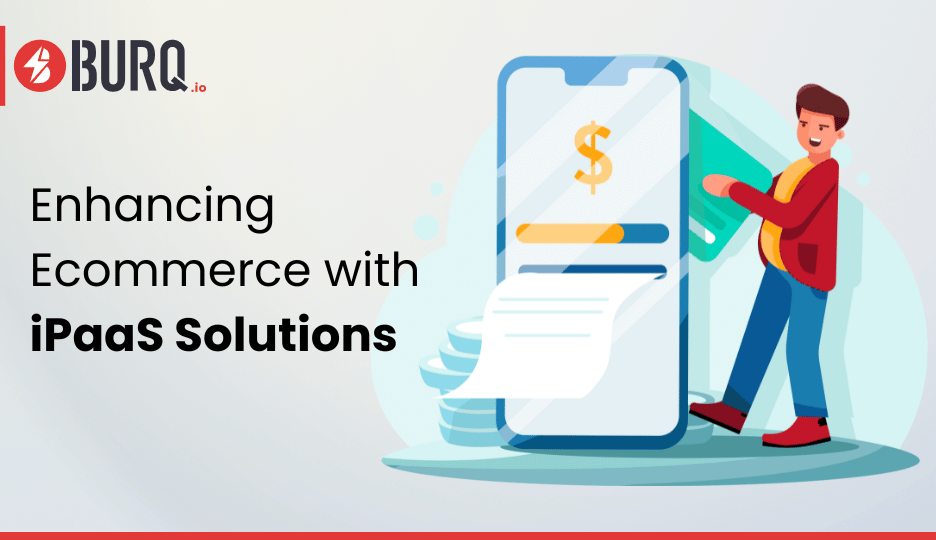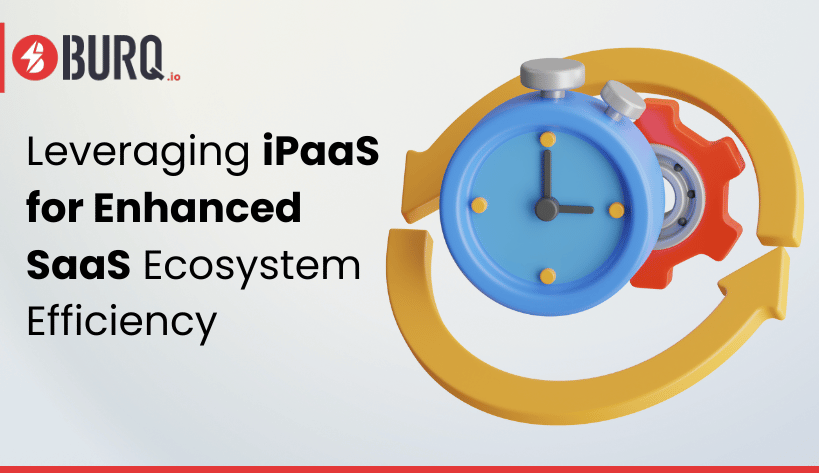Introduction
According to Live Science, 402 terabits per second (Tbps) is a record-breaking and breathtaking fiber-optic data transmission speed that researchers have accomplished this year. This leaves us agape, tickling our minds with questions about what will come next. It is mind-blowing, approximately 1.6 million times faster than the household broadband connection.
Today, the world is surviving on data, and that mandates a need for smooth and flawless data exchange between systems. Point-to-point integration is critical in granting this by directly connecting two endpoints to facilitate data transfer. It’s a method that merges simplicity with efficiency, making it an intriguing choice for some integration scenarios. But, like any technology, P2P integration has advantages and disadvantages that must be carefully weighed. In this article, we’ll explore point-to-point integration, evaluate its benefits and drawbacks, and consider its common uses in modern IT environments.
What is Point-to-Point Integration?
So, what exactly is Point-to-point integration? Often referred to as P2P integration, it is a method of connecting two systems directly without the involvement of an intermediary. This integration model enables straightforward data exchange between the two endpoints, making it a popular choice for simple use cases where only a few systems need to interact.
P2P integration has a simple architecture compared to other methods like hub-and-spoke or enterprise service bus (ESB) systems. In hub-and-spoke, for example, all communications pass through a central hub, supporting highly complex data routing and transformation. On the other hand, ESB systems have a more scalable and flexible approach that provides a central platform that manages all P2Pintegration outshines in scenarios where direct, uncomplicated communication between systems is required and where the overhead of a more complex system is unnecessary.
Advantages of Point-to-Point Integration
Let’s examine the most significant benefits of point-to-point integration in detail.
Simplicity
One of the most important advantages of P2P integration is its simplicity. When you have a limited number of systems to integrate, this direct connection approach is simple and easy to implement. This simplicity also extends to management and maintenance. Since each connection is made directly between two systems, there’s no need for a complex intermediary system to supervise the communication. This makes point-to-point integration highly appealing and appropriate for small-scale projects where ease of use is the top priority.
Speed
Another significant advantage of point-to-point integration is its speed. As the data is transferred directly between two systems, latency is often minimized compared to more complex integration architectures. This direct route can make P2P integration a robust solution, especially in cases where real-time data exchange is important. When your business processes are based upon the immediate availability of data, the speed benefits of P2P integration can be a major advantage.
Cost-Effective for Small-Scale
Point-to-point integration can be highly cost-effective for small-scale integrations. The absence of expensive middleware or complex infrastructure means you can gain your integration goals without costing you an arm and a leg. This is especially true for businesses that have to integrate a limited number of systems and where the simplicity and directness of P2Pintegration are more than sufficient to meet their requirements.
Disadvantages of Point-to-Point Integration
Along with its much-cherished advantages, P2P integration poses its own set of challenges, such as the following:
Scalability Issues
Even though point-to-point integration provides a high level of simplicity, this advantage can soon turn into a disadvantage as the number of systems increases. As more endpoints are added, the network of integrations can become a tangled web, birthing scalability issues. Managing multiple direct connections can become increasingly complex, and the P2P system integration that once seemed very simple can become a dilemma.
Maintenance Difficulty
Another notable disadvantage of point-to-point integration is the difficulty of maintenance. Every time a system is updated, the connections to all other systems may also need adjustments. This can be highly challenging when there are numerous interconnected systems in a P2P manner. The more connections you have, the more time-consuming and resource-intensive it becomes to maintain and update the system. This can lead to soaring costs over time and the risks of high downtime if issues arise during updates.
Lack of Flexibility
Flexibility is another prominent aspect of point-to-point integration that has a major shortcoming. Once a connection is fixed between two systems, it can be difficult to modify or expand without affecting the entire network of integrations. This inability to provide flexibility can be a huge drawback, especially in environments where new functionalities or changes are usually required. Unlike more modern integration architectures that are developed to be modular and adaptable, P2P integrations can be rigid and tough to modify.
Common Uses of Point-to-Point Integration
Regardless of its benefits and pitfalls, P2P integrations are useful in various scenarios.
Small Businesses
Small businesses often find point-to-point integration a practical solution for their needs. With a small number of systems to integrate and less complex data exchange needs, P2P integration can efficiently connect different applications and systems. For example, a small e-commerce business might use P2P integration to connect its inventory management system with its online store platform, enabling real-time updates without requiring complex middleware.
Real-Time Data Exchange
Point-to-point integration is also ideal in scenarios where real-time data exchange is a must. For example, in financial services, where timely data transfer is important for trading and transactions, the speed advantages of P2P integration can be fully utilized. In these cases, the direct communication channel ensures that data is transferred as swiftly as possible, minimizing the risk of delays that could adversely affect business operations.
Legacy Systems
Another widespread use of point-to-point integration is connecting legacy systems. Many older systems do not support modern integration architectures like ESB or hub-and-spoke. In such cases, P2P integration connects these systems directly, facilitating uninterrupted operation within an extended IT system. This can be particularly useful in industries like manufacturing or healthcare, where old systems are often still in use, and direct integration can keep these systems relevant and operational.
Best Practices for Implementing Point-to-Point Integration
Now that we have discussed the pros and cons of P2P integration, let’s examine some best practices for flawless integration.
When to Use P2P
Even though P2P integration has numerous advantages, it’s important to know when it’s the best solution. It is most suitable when you have a small number of systems to connect and when simplicity and speed are priorities. If your integration needs are limited and you don’t expect massive growth in the number of systems or the complexity of data exchange, point-to-point integration can be the best choice.
Managing Complexity
The complexity of P2P integration increases with the number of systems linked. To handle this complexity, detailed records of every link must be kept. This includes monitoring the systems linked together, the data flows that occur between them, and the protocols that are used. Proper design and strict endpoint management may avoid the unmanageability of intricate integrations.
Monitoring and Maintenance
Ongoing monitoring and maintenance are required to guarantee the performance and reliability of P2P integrations. You must consistently monitor the status of each connection and be proactive in handling any issues that arise. Automated monitoring tools can help you avoid possible problems and ensure your integrations continue functioning smoothly.
Future of P2P Integration
The future of P2P holds immense promise by overcoming the potential drawbacks of this system.
Technological Developments
Technological developments may help reduce some of the present disadvantages of P2P integration. Further advances in automation and artificial intelligence could simplify managing complex webs of integrations, minimizing the maintenance load and making scalability a minor issue. Additionally, improvements in integration platforms might provide new ways to simplify P2P connections, making them more flexible and manageable.
Shifts in Integration Strategy
As IT environments continue to change and develop, we may witness changes in integration techniques that impact the use of P2P integrations. For example, the increasing use of cloud-based services and microservices architectures might decrease the need for P2P integrations, as these environments often need more flexible and scalable integration approaches. However, P2P integration will likely remain a valuable tool in the long run for certain use cases, especially those involving legacy systems or small-scale projects.
Conclusion
Point-to-point integration is a go-to option for small-scale integrations and real-time data sharing since it provides an easy-to-use and efficient system connection. However, it has limitations, especially regarding adaptability, maintenance, and scalability. It’s important to immaculately balance these benefits and drawbacks when considering your integration requirements.
When deciding whether P2P integration is the best choice for your project, consider factors such as the number of systems you need to connect, the complexity of your data exchange requirements, and the potential for future growth. P2P integration might be an excellent choice for managing a small-scale integration project or connecting legacy systems.
For more complex needs, or if you expect rapid growth, exploring P2P and other integration options might be a great idea at burq.io. We specialize in offering our services to businesses that aim to implement the proper integration strategies for their unique needs. Whether you’re considering P2P integration or a more complex architecture, our team of experts can guide you through the process, ensuring a flawless solution that matches your business requirements. Reach out to us today to learn how we can help you redefine your integration strategy and propel your business forward.


